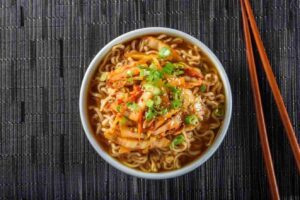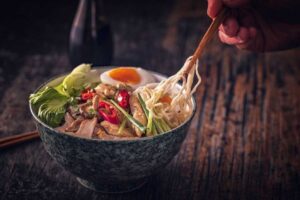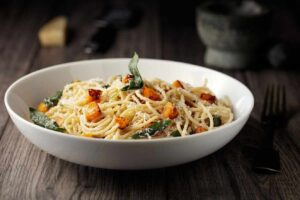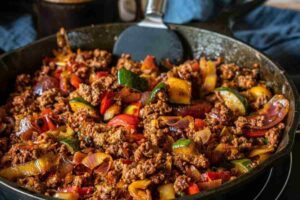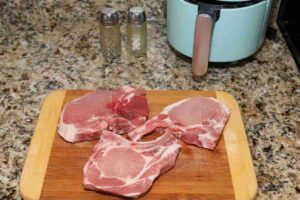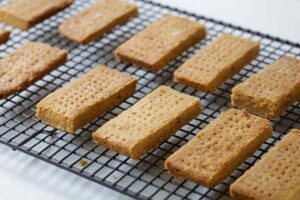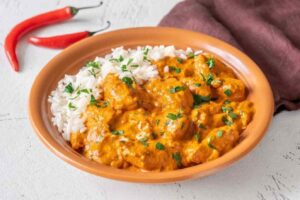A noodle bowl brings together the goodness of noodles, fresh vegetables, proteins, and a delectable sauce or broth to create a satisfying and flavorful meal. Originating from various Asian cuisines, this popular dish is renowned worldwide for its healthiness and comforting qualities.
The star of a noodle bowl is the noodles themselves, which can vary from rice noodles, wheat noodles, soba noodles, udon noodles, to even ramen noodles. These perfectly cooked noodles form the foundation of the dish, providing a hearty and satisfying base.
What truly makes a noodle bowl irresistible is the combination of vibrant and crunchy vegetables. Bell peppers, carrots, cabbage, bean sprouts, snow peas, and mushrooms can be added to enhance the bowl with texture, flavor, and a colorful presentation.
To make the noodle bowl a well-rounded and delicious meal, proteins play a key role. Grilled chicken, juicy prawns, tender beef, crispy tofu, or seasoned tempeh can be chosen as protein sources, adding depth and taste to the dish.
Whether enjoyed as a quick and satisfying lunch on a chilly day or savored as a leisurely dining experience, the noodle bowl caters to diverse palates. It invites experimentation by allowing endless combinations of ingredients, ensuring that each noodle bowl is unique with countless variations and regional twists.

Table of contents
Origins of the Noodle Bowl
Noodles have been a beloved culinary staple in many Asian countries for generations, and it is from this rich tradition that the noodle bowl emerged. The exact origin of noodles is difficult to pinpoint with certainty, as they have been a part of Asian cuisine for thousands of years.
China is often credited as the birthplace of noodles, with accounts dating back as far as 2000 BCE. Chinese cuisine showcases noodles in a variety of forms, sizes, and preparations, enjoyed in soups, stir-fries, and cold dishes.
Over time, noodles gained popularity and spread to neighboring countries like Japan, Korea, Vietnam, and Thailand, each contributing their unique styles and flavors to noodle-based dishes. Thai and Vietnamese cuisines prominently feature rice noodles, while Japan is known for its recognizable noodle variations such as ramen bowl, udon, and soba.
What makes the noodle bowl so popular is its versatility, allowing for countless combinations of noodles, broths, proteins, and toppings. In Asia, street vendors, food carts, and noodle stalls have long been selling comforting bowls of noodles to both locals and tourists.
In recent years, the noodle bowl has gained international recognition and popularity beyond Asia. Its appeal has led to diverse interpretations and variations incorporating regional ingredients and flavors while preserving the essence of the original concept.
The enduring allure of the noodle bowl is a testament to the timeless appeal of noodles and their ability to provide a comforting and satisfying meal enjoyed by people around the world.
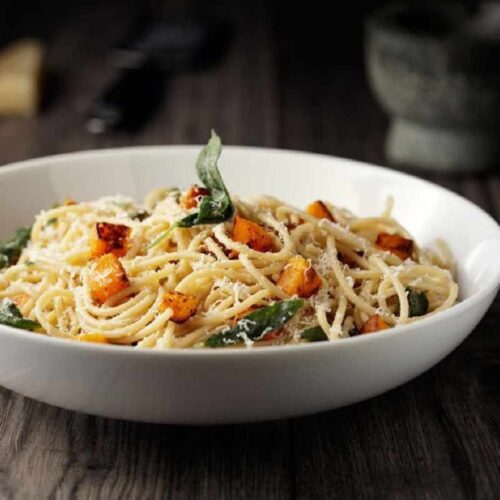
Noodle Bowl
Equipment
- 1 Large pot For boiling the noodles and preparing the broth.
- 1 Strainer or colander To drain the cooked noodles.
- 1 bowl To serve the finished noodle bowl.
- 1 Chopsticks or fork Utensils for eating the noodle bowl.
- 1 Chef's knife For slicing or chopping vegetables and other ingredients.
- 1 Cutting board To provide a surface for cutting and preparing ingredients.
- 1 Soup ladle To serve the hot broth into the bowl.
- 1 Tongs Useful for tossing and stirring the noodles and other ingredients.
- 2 Optional Strainer ladle or skimmer: If you prefer to strain any additional ingredients from the broth before serving.
Ingredients
- 250 gram Noodles Choose your favorite type of noodles, such as ramen noodles, udon noodles, soba noodles, rice noodles, or egg noodles.
- 250 gram Broth Use vegetable broth, chicken broth, beef broth, miso broth, or any other flavorful broth as the base for your noodle bowl.
- 200 gram Protein Add protein to your noodle bowl with ingredients like sliced chicken, beef, shrimp, tofu, or tempeh.
- 500 gram Vegetables Include a variety of fresh vegetables such as bok choy, spinach, carrots, bean sprouts, bell peppers, mushrooms, or scallions.
- 1 tb sp Fresh herbs Enhance the flavor of your noodle bowl with herbs like cilantro, basil, mint, or green onions.
- 2 tbsp Sauce Use soy sauce, tamari, hoisin sauce, sesame oil, fish sauce, or sriracha to add depth and flavor to your noodle bowl.
Instructions
- Cook the noodles according to the package instructions. Drain and set aside.
- In a large pot, heat the vegetable or chicken broth over medium heat. Add the soy sauce, oyster sauce, sesame oil, minced garlic, and minced ginger. Stir well to combine the flavors.
- Add the sliced vegetables and protein (chicken, shrimp, or tofu) if using. Cook until the vegetables are tender and the protein is cooked through.
- Taste the broth and season with salt and pepper as desired.
Video
Notes
- Noodle Options: You can use a variety of noodles for your noodle bowls, such as rice noodles, udon noodles, soba noodles, or even whole wheat noodles. Choose the type that you prefer or experiment with different ones to add variety to your dish.
- Broth Variation: While the recipe suggests a vegetable or chicken stock-based broth, feel free to customize it according to your taste preferences. You can use miso paste for a flavorful twist or add spices like star anise or cinnamon to create an aromatic broth.
- Vegetables: The vegetable selection is versatile, and you can use any fresh vegetables you have on hand. Don’t be afraid to mix and match based on what you enjoy. Other options include bean sprouts, baby corn, zucchini, or spinach. Feel free to get creative!
- Protein Choices: In addition to grilled chicken, shrimp, or tofu, you can also explore other protein options like thinly sliced beef, pork, or even poached eggs. Cook the protein separately and add it to the bowl just before serving to ensure it remains tender and juicy.
- Seasoning and Adjustments: Taste the broth before serving and adjust the seasoning accordingly. You can add more soy sauce or salt if desired. You can also personalize the flavor profile by incorporating additional spices like chili flakes, sesame oil, or lime juice.
- Garnishing: The garnishes play an essential role in enhancing the overall presentation and taste. Feel free to experiment with different herbs, such as Thai basil, mint, or coriander, to add a refreshing touch. Sliced chili peppers, crushed peanuts, or fried shallots are also popular toppings to consider.
- Serving and Enjoying: Serve the noodle bowl hot, allowing the broth to meld with the noodles and vegetables. Remember to mix everything well before enjoying each bite to ensure an even distribution of flavors.
- Customization: The beauty of a noodle bowl is its versatility. Feel free to adapt the recipe to your dietary needs or preferences. For example, you can make it vegetarian or vegan by using vegetable broth and omitting animal-based proteins.
How to Customize Your Noodle Bowl to Your Taste
Making your noodle bowl your own by tailoring it to your taste is a fun and original way to savor a one-of-a-kind meal. Here are some suggestions for personalizing your noodle bowl:
1. Choose the type of noodle
Choose your preferred variety of noodles as a first step. If you want to try a fusion twist, you have the choice of rice noodles, udon noodles, soba noodles, or even spaghetti noodles.
2. Pick a flavorful broth
Choosing a delicious broth is important since it makes a noodle bowl. Miso, chicken, meat, vegetables, miso, or even a spicy broth are a few ideas to think about. You might choose a clear soup or a cool broth with citrus undertones if you want something with a milder flavor.
3. Add protein
Select the protein source you want to use. Sliced chicken, beef, pig, prawns, tofu, and even a mixture are common options. To improve the flavor of your protein, cook it with some herbs, spices, or marinades.
4. Include vegetables
Add a variety of vegetables to your dish of noodles. Sliced spinach, bok choy, mushrooms, bean sprouts, carrots, bell peppers, or any other veggies you want could be added. They can be steamed, sautéed, or even left raw for a crisp, flavorful crunch.
5. Enhance with herbs and spices
You may up the ante on your noodle bowl by adding fresh herbs and spices. For added flavor and texture, mix in a handful of finely chopped cilantro, basil, mint, green onions, or even sesame seeds or broken peanuts.
6. Customize the heat level
You can adjust the heat level of your noodle bowl if you like spicy food by adding chili flakes, sriracha sauce, or your preferred hot sauce. To suit your tastes, change the heat level.
7. Finish with garnishes
Finally, give your noodle bowl a few final touches. Think of adding a squeeze of lime or lemon juice, a drizzle of soy sauce or fish sauce, a dollop of hoisin sauce, or even a drop of sesame oil as a garnish. Your personalized bowl can come together thanks to these extra flavors.

The Health Benefits of Eating Noodle Bowls
When made with wholesome ingredients, eating noodle bowls can have a number of health advantages. Consider these potential health advantages of eating noodle bowls:
Balanced nutrition
A well-rounded meal can be made from noodle bowls by adding a variety of vegetables, proteins, and carbohydrates. You can make sure you’re receiving a proper balance of macronutrients, fiber, vitamins, and minerals by integrating diverse food categories.
Dietary fiber
Whole-grain or rice noodles, which can be a rich source of dietary fiber, are frequently used in noodle bowls. Fibre supports sensations of fullness, aids in digestion, and supports stable blood sugar levels. Additionally, frequent ingredients in noodle bowls including veggies and legumes are high in fiber.
Protein content
Noodle bowls may be an excellent source of protein depending on the items you select. Protein is necessary for many body processes, including tissue growth and repair, immune system support, and the maintenance of strong hair and nails. You may add more protein to your noodle bowl by including lean meats, fish, tofu, or lentils.
Essential nutrients
Vegetables, herbs, and spices are frequently used in noodle bowls to add a range of nutrients. Vitamins A, C, and K, for instance, are present in foods like carrots, bell peppers, and leafy greens, while antioxidants and phytochemicals are present in foods like cilantro and basil that promote overall health.
Customizable ingredients
Noodle bowls have the advantage of being adaptable to your dietary requirements and tastes. Whether you’re on a low-sodium, gluten-free, vegetarian, or vegan diet, you can select items that meet your needs.
Portion control
Noodle bowls might aid in portion control if you are careful about the quantities of your servings. You may make sure you’re eating the right quantity of food while remaining content by concentrating on a well-portioned bowl that contains a balance of veggies, proteins, and noodles.
Hydration
Broths or sauces, which are frequently included in noodle bowls, can help you meet your daily fluid requirements. It’s important to stay hydrated for several bodily processes, including digestive support, nutrient transfer, and body temperature regulation.


